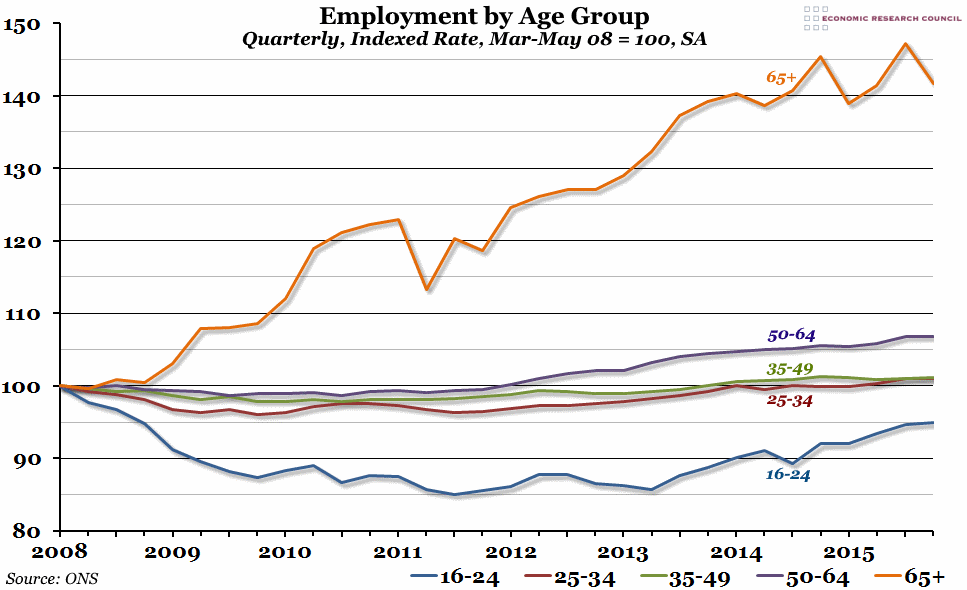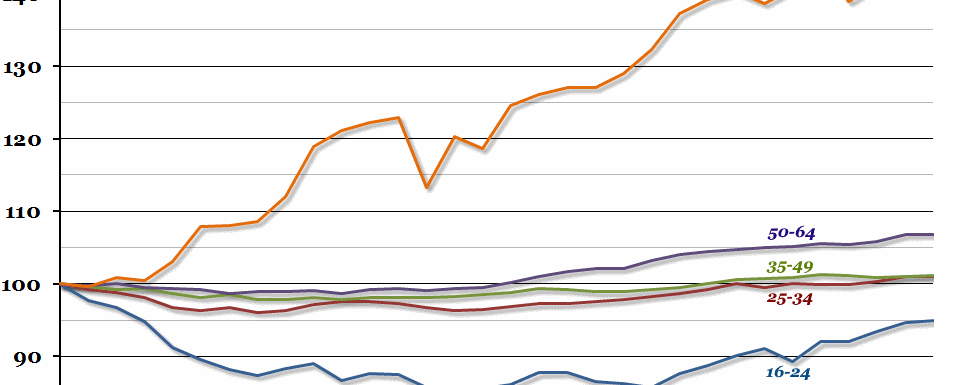
Summary
Roughly eight years have passed since the pre-crisis peak in employment, and there are almost 1.2 million more people in work today than in the three months between March and May 2008. However, over that period the age profile of the workforce has changed, as the employment rate of older people has grown faster than that of younger people.
What does the chart show?
The chart shows an index of the employment rate (the proportion of the total population that is currently employed) for each age group over the previous 3 months, so that the period March to May 2008 (the pre-crisis peak of employment) is equal to 100 for each group. A number over 100 therefore represents a greater proportion of people in that age group in employment than at the peak, and a number under 100 represents a smaller proportion.
Why is the chart interesting?
Although the 2008 crash was not as harmful to the labour market as might have been expected given its severity, the employment rate still fell between 2008 and 2011 for all age groups except the over 65s (who instead saw a 20% increase in their employment rate, representing over 200,000 more people over 65 in work). Since that trough, the UK labour market has recovered strongly, and although the unemployment rate edged up slightly in the latest three month period, the employment rate for the majority of the population is back to pre-crisis levels (and beyond). The employment rate for the 25-49 age range is now roughly equivalent to the 2008 peak, while for the older age groups – and particularly the over 65s – it is now much higher. However, the employment rate for the 16 to 24 group fell dramatically after the crash, and remains 5% lower than the previous peak today.
For the under 25s, this reduction in the employment rate is not necessarily a bad thing: it may partly reflect the increase in the school leaving age, and the number of young people going to university. Youth unemployment, at 13.7%, is higher than for the general population, but it is roughly equivalent to the 2008 level.

